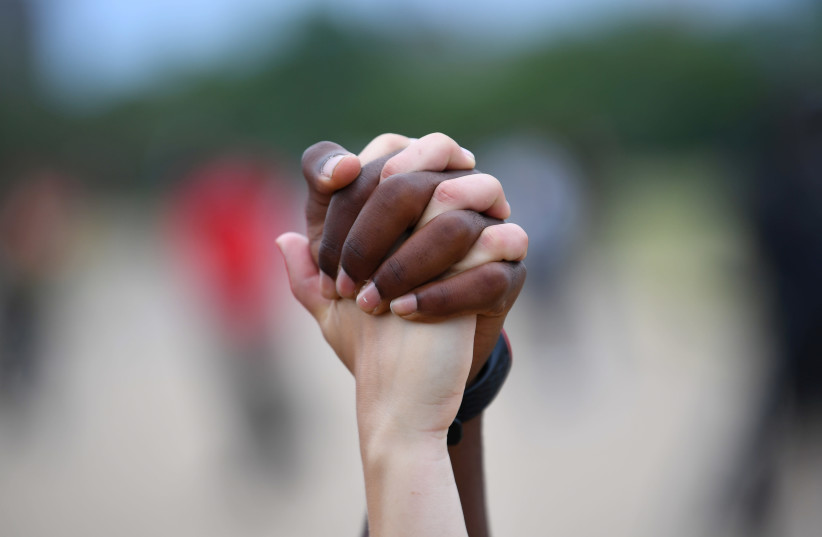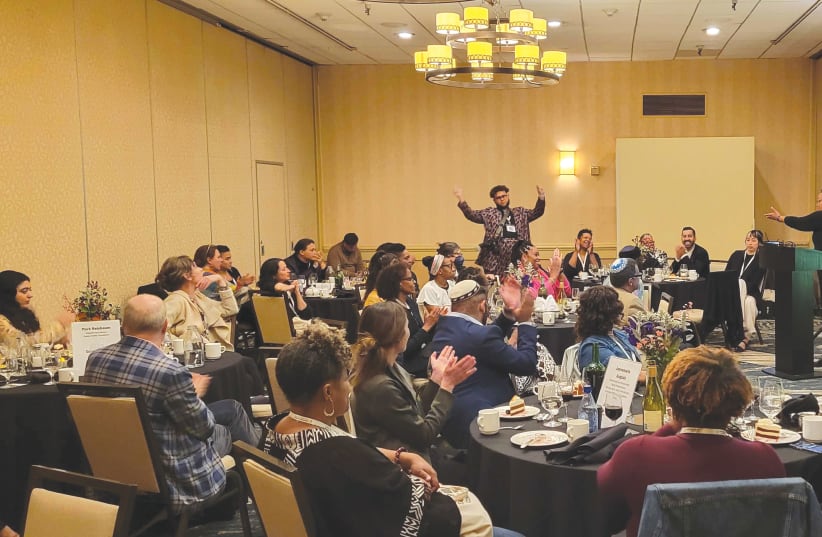In the last five years, amid the racial reckoning in the US, the pandemic, economic challenges, and the October 7 attacks on Israel, the Jews of Color Initiative (JoCI) has made steady progress toward our vision of a Jewish community that reflects racial equity and diversity and centers the leadership of Jews of Color (JoC).
Now in our seventh year, we are beyond the start-up phase of an organization, those first few years of organizational infancy when a few easy wins are often to be had. We are increasingly aware that supporting serious research is strategically vital for advancement and growth in our field.
Our 2021 major research study, “Beyond the Count: Perspectives and Lived Experience of Jews of Color,” documented how Jews of Color view Jewish identity and how they have experienced systemic racism in Jewish spaces. Of course, it was profoundly painful to discover that 80% of study participants have faced discrimination in Jewish settings, particularly in spiritual or congregational environments, and almost 50% have altered how they speak, dress, or present themselves to conform to predominantly white Jewish spaces.
The report’s impact was reflected in the direct feedback it garnered reporting data and insights that were lacking. We were told that the Jews of Color Initiative had both an opportunity and responsibility to not only elevate more JoC voices through academic research, but to take that research further. Therefore, in January 2022, the Jews of Color Initiative announced a request for proposals to fund research projects focused on Jews of Color, led by Jewish scholars of Color.


Our RFP [request for proposal] aimed to do this, and we awarded research grants to projects exploring black Jewish women’s birth outcomes; education in Latinx-Jewish families; experiences of Asian adoptees; and the perspectives of aging Jews of Color.
By spring 2023, the projects were complete. The topics covered by these studies reflect the complex issues our community must grapple with.
Some key takeaways:
• We learned about pregnancy, birth, and postpartum Jewish rituals; that there is enormous power and wisdom that emerges from JoC intersectional identities; and that there is profound value in documenting these rituals as they support spiritual resiliency.
• We learned about the connection between birth outcomes and the benefits of health provider-patient shared identity, especially as related to anti-blackness and antisemitism focused on Black Jewish women.
• To address perceptions of gender, gendered spaces, settler colonialism, and Hawaiian historical topics, we learned about the relationships between the Kanaka Maoli (“indigenous Hawaiian”) and Lukaio (“Jewish”) communities, and the role aha (“conference” or “dialogue”) and building haverim (“friendship between the Jewish and Kanaka Maoli communities”) can have on transformative community relationships.
• We learned about Latinx-Jewish families and how being multicultural, multilingual, and racially diverse informs educational and programming choices for their children.
• We were taught the history of Asian adoption among Jewish Americans and of adoptees’ understandings of their Asian-Jewish identities – and how systemic structures and changing social circumstances and personal preferences led to the decision of many Jewish families to adopt children from Asia.
• We were given insights into how aging Jews of Color are affected by national and global violence and to what extent those events amplify historical trauma and oppression given their histories of being marginalized because of intersecting identities of faith, gender, race, and ethnicity.
THAT WAS just a taste of the new knowledge that now powerfully informs our understanding of ritual, women’s health, identity, and education of youth and families. There is much to unpack.
Beyond its specific studies, the research invited us to deeply consider what it means to be, who self-identifies as, and what we mean, when we say, “Jews of Color”; to examine when a shared understanding and identity is useful, and when it is not; how demographics intersect with racism and colorism; and how the term “Jew of Color” gives too much deference to whiteness.
Further studies should delve into the differences among Jews of Color and how their lived experiences may differ based on intersectional identities. Understanding these nuances will help guide conversations and interventions for the important work of fighting racism.
We were also left pondering:
• What does it mean to be Jewish in the United States? Which narratives are encompassed in the word “Jewish”?
• How do lineal and chosen family backgrounds inform one’s relationship to being Jewish?
• How do race and racism inform who is, and who is perceived as Jewish?
• What do we need to know about the diversity of how US-based Judaism is expressed? How do those expressions inform more than the dominant US narrative about Judaism? Who gets to create and express those narratives?
• And how do these ideas inform who defines, conducts, and shares Jewish research?
THIS ENABLES new, data-driven insights for investigation by researchers and practitioners of maternal health, family and elder engagement, and Jewish identity and education, which provide powerful perspectives for the Jewish community and
Just seven years ago our community was still wondering whether Jews of Color were a real population or just “unicorns.” Now we are wondering how to ensure future funded research opportunities centering on Jews of color and all of our intersectional identities.
All of us in the American Jewish community continue to adjust to life post-October 7, 2023. Antisemitism is now in every bit of the air we breathe. And raw trauma is now part of everyday life. The Jews of Color Initiative knows that especially in the most difficult of times, it’s very important to focus on efforts that are inclusive, supportive, and promote our ability to thrive. Celebrating research and data about Jewish rituals, our health, our educational experiences, our adoption journeys, and our elders honors the most intimate pathways and connections to Jewish life and legacy. This research and data not only expands what we know about Jews of Color but fortifies the Jewish community, strengthens Jewish identity, and reinforces our Jewish future.
The writer is CEO of the Jews of Color Initiative.
